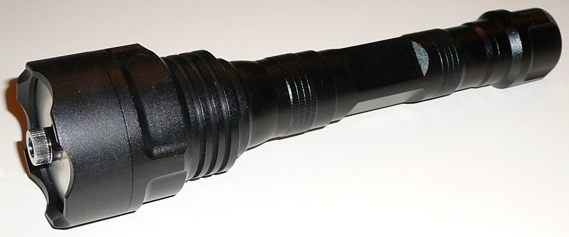bryce007
0
- Joined
- Jul 1, 2009
- Messages
- 1,679
- Points
- 0
I agree, I think the first should be set at 300mA. Then set the second diode depending on how long the first one lasted.

Follow along with the video below to see how to install our site as a web app on your home screen.
Note: This feature may not be available in some browsers.



Igor;
Several board members have lost diodes @ 350ma.
The Sanyo 12X is speced for 200ma continuous.
Setting at 300ma is 50% higher !
Sounds like a good point to test at if you are looking for 100 hour lifetime.
Larry DFW
But wouldn't 200ma be the safety setting (without a doubt) for both good and bad diodes? I would think that 300ma would still be safe
Setting at 300ma is ~50% higher than this max. pulsed rating !
I would like to see 300mA testing personally...
totally agree, these details are up to you, igor!
i said test the first diode at 400mW output, but your point is true. so lets see how much off the two lowest are, compared to the others?
Test current specific. The output will vary, but most of us set by current rather than output.
I agree, I think the first should be set at 300mA. Then set the second diode depending on how long the first one lasted.
Several board members have lost diodes @ 350ma.
...300mA... Sounds like a good point to test at if you are looking for 100 hour lifetime.
Larry DFW
The Sanyo 12X is speced for 200ma continuous.
Setting at 300ma is 50% higher !
Both the 8X Sharp & Sony diodes are speced for 250mw pulsed power
These are probably the diodes we are testing.
These are power and voltage levels for the power testing I did on Panasonic 8X diodes:
Note - Sony says pulsed maximum is 5VDC @ 320mw & 25° F for its 12X diodes
But wouldn't 200ma be the safety setting (without a doubt) for both good and bad diodes? I would think that 300ma would still be safe

Double the voltage. Multiple times the heat. These diodes are now the dominate ones on the market. Would it be correct to assume that the current hosts, sold on by members of this website, would not be suitable for these bluray's?

The hosts used by many ARE too small for the heat dissipation of these more powerful diodes.
The hosts used by many ARE too small for the heat dissipation of these more powerful diodes.
I was running some tests tonight with a very large 14oz. host:

This host heatsink was too hot to touch after about 10 minutes of continuous run time dissipating 2 watts.
LarryDFW

